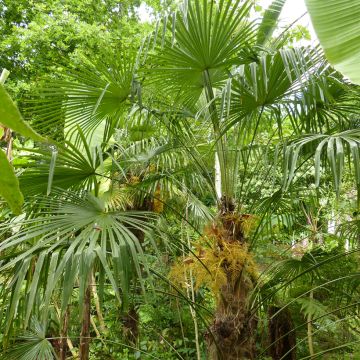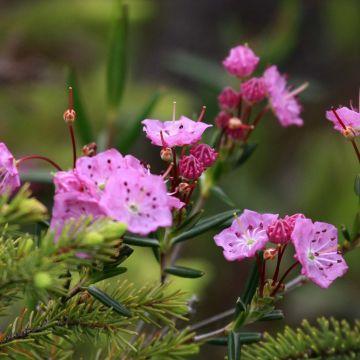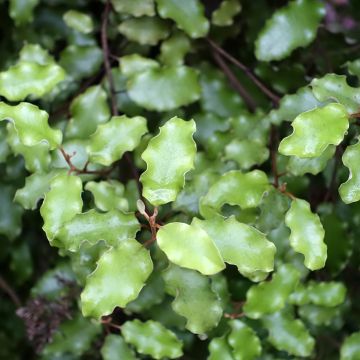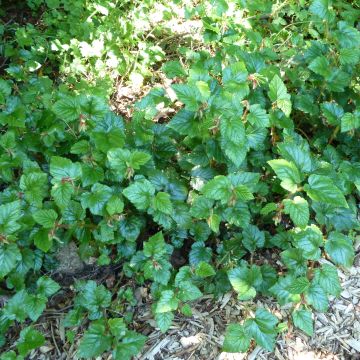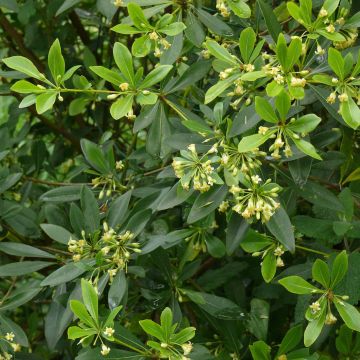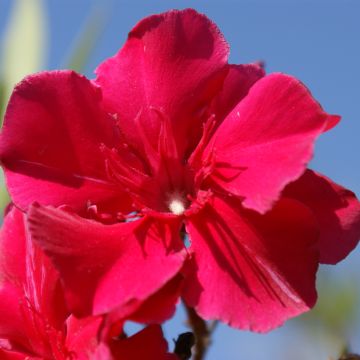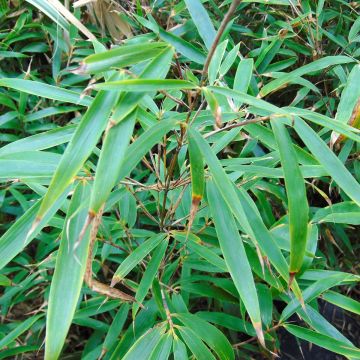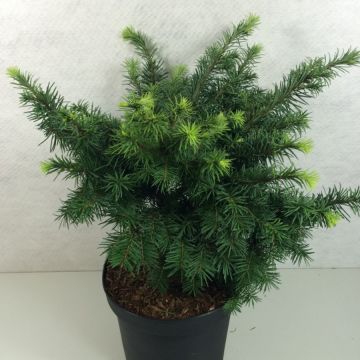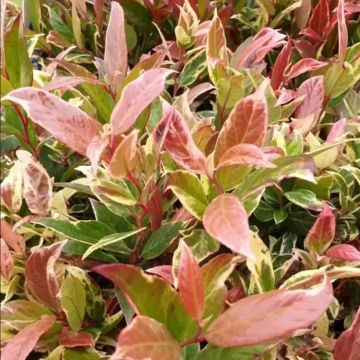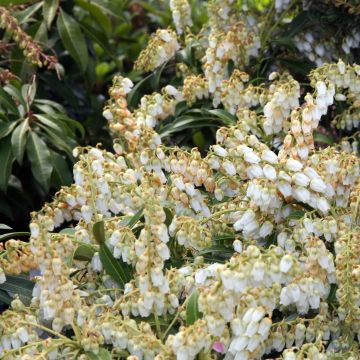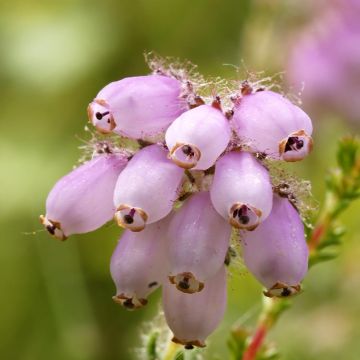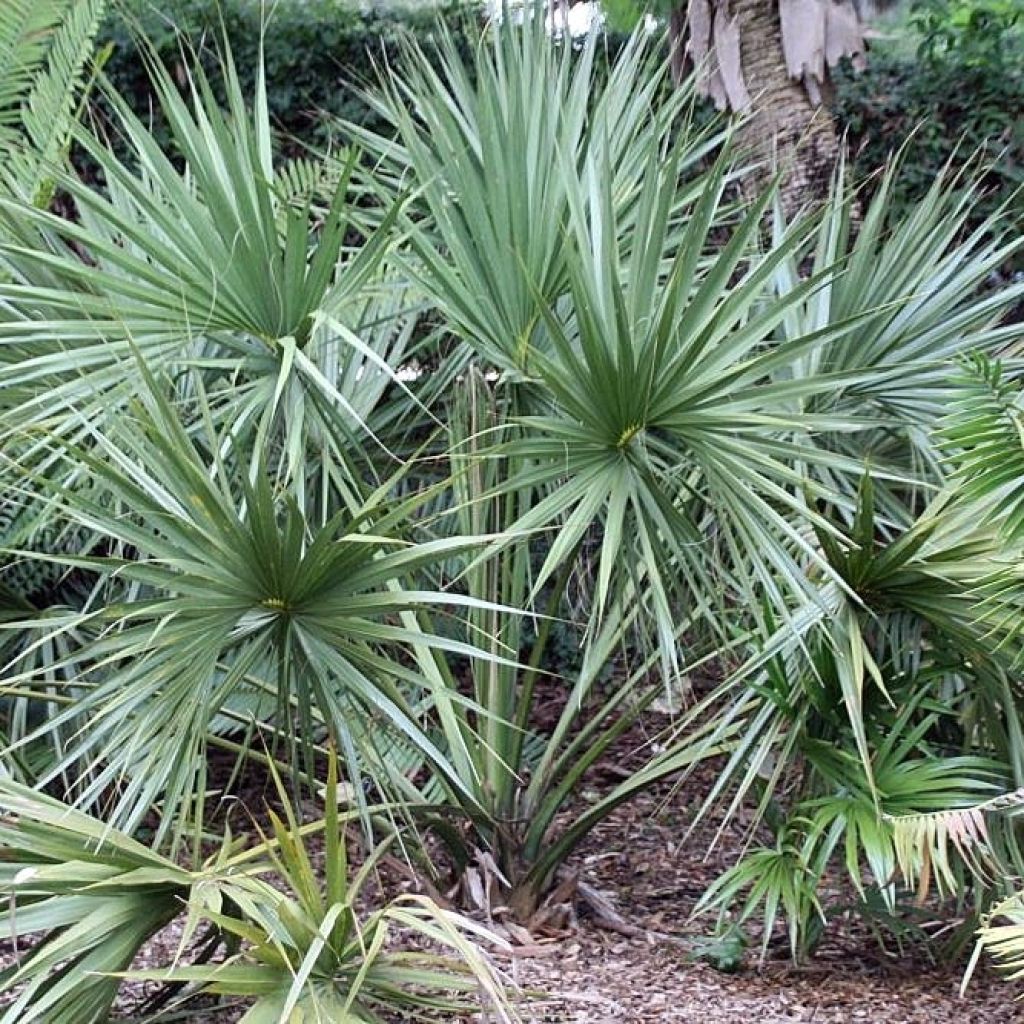

Sabal etonia - Palmier nain
Sabal etonia - Scrub Palmetto
Sabal etonia
Scrub Palmetto
This plant carries a 24 months recovery warranty
More information
We guarantee the quality of our plants for a full growing cycle, and will replace at our expense any plant that fails to recover under normal climatic and planting conditions.
From €5.90 for pickup delivery and €6.90 for home delivery
Express home delivery from €8.90.
Does this plant fit my garden?
Set up your Plantfit profile →
Description
The Sabal etonia is very similar to the Sabal minor with which it shares the common name of dwarf palmetto. This species grows under pine trees in the dry sands of Florida and is also one of the hardiest (-12°C (10.4°F) minimum). It is a bushy palm tree that develops a very short trunk, mostly buried, and bears stiff, fan-shaped leaves. It differs from the Sabal minor by having lighter foliage with numerous filaments, and shorter inflorescences. Less demanding than the Sabal minor in terms of soil, this palm tree tolerates poor and relatively dry soils. It is an excellent choice for ornamental purposes in a small garden, terrace, or balcony, in an exotic or contemporary setting.
The Sabal etonia belongs to the family of Arecaceae, and is native to the scrublands of central and southeastern Florida. This palm tree will not exceed 3m (10ft) in height with a 2m (7ft) spread, and it has a very slow growth rate. It develops a solitary, underground false trunk (stipe), sometimes emerging up to 2m (7ft) from the ground. Its diameter can reach 20cm (8in). It is grey in colour and bears characteristic geometric patterns that resemble coarse braiding. These reticulated ornaments are the remains of the old dried petioles. The foliage is arranged in a terminal crown at the top of the trunk. The crown consists of 5 to 10 palmate leaves arranged in a fan shape around a central axis. In the Sabal etonia, each leaf, over 1m (3ft) wide, is yellowish-green in colour. It is deeply divided into 20 to 60 rigid segments with bifid tips, adorned with filaments along the edges, and carried by a robust, smooth petiole that can reach a length of 1m (3ft).
This small palm tree is capable of flowering at the age of 10, in the form of highly branched, light and fragrant panicles that rarely protrude from the foliage. The inflorescences are laden with bisexual flowers that are perfectly capable of forming fruits. They emerge every summer, between the large leaves, bearing a large quantity of small whitish, fragrant, and nectar-producing flowers, which, in favourable climates, will give rise to black fruits, each containing a shiny brown, pear-shaped seed measuring 9 to 13mm (1in) in length.
This dwarf palm tree, along with its cousin Sabal minor, Chamaerops humilis, and Trachycarpus fortunei, is one of the easiest to acclimatize. When planted in the ground, it should be placed in isolation, near a swimming pool for example, in the company of banana trees, cannas, or yuccas, in an exotic-inspired setting. However, this very adaptable plant will be particularly valuable for improving pine undergrowth in a seaside garden. A little challenging to pair due to its strong personality, it can nonetheless be planted in groups of 3 and surrounded by a carpet of Epimedium, Geranium macrorrhizum, or Soleirolia soleirolii. A contemporary garden can adopt it above a tide of white pebbles. It will make a magnificent specimen on a terrace or balcony, planted in a carefully chosen large container, among pots of bamboo, for example.
Report an error about the product description
Sabal etonia - Scrub Palmetto in pictures
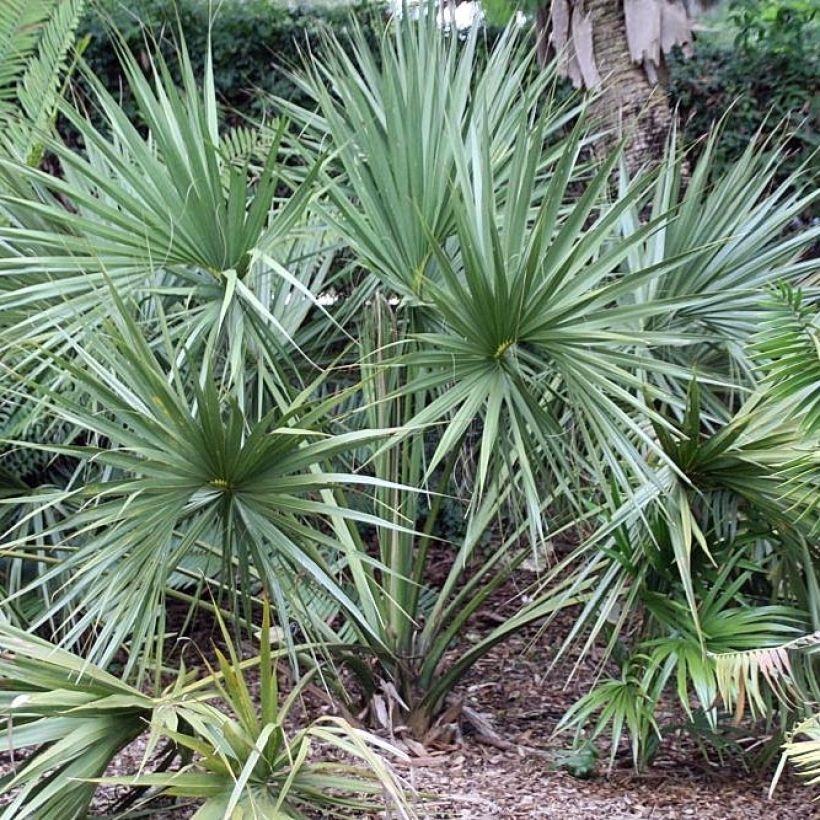

Plant habit
Flowering
Foliage
Botanical data
Sabal
etonia
Arecaceae
Scrub Palmetto
North America
Other Sabal
Planting and care
This palm tree shows a very slow growth, especially during its first 5 years, and it requires sun and warmth that will promote faster development. Plant the Sabal etonia in open ground or in a very large pot, preferably in a warm climate where summers are long. Plant it in deep, light and well-drained soil, preferably composed of leaf compost and sand. It is not too fussy about the nature of the soil but shows a preference for soft and deep soils. It tolerates summer drought quite well after 3 or 4 years of cultivation in open ground. Some watering in summer promotes growth. Plant it in a sunny but not scorching position (morning sun), or in partial shade, under large pine trees for example, and protected from cold and dry winds. Water regularly during the first 3 years, especially if the summer is dry. Easy to cultivate, it requires little maintenance except for pruning the oldest leaves close to the trunk.
Planting period
Intended location
Care
This item has not been reviewed yet - be the first to leave a review about it.
Evergreen shrubs
Haven't found what you were looking for?
Hardiness is the lowest winter temperature a plant can endure without suffering serious damage or even dying. However, hardiness is affected by location (a sheltered area, such as a patio), protection (winter cover) and soil type (hardiness is improved by well-drained soil).

Photo Sharing Terms & Conditions
In order to encourage gardeners to interact and share their experiences, Promesse de fleurs offers various media enabling content to be uploaded onto its Site - in particular via the ‘Photo sharing’ module.
The User agrees to refrain from:
- Posting any content that is illegal, prejudicial, insulting, racist, inciteful to hatred, revisionist, contrary to public decency, that infringes on privacy or on the privacy rights of third parties, in particular the publicity rights of persons and goods, intellectual property rights, or the right to privacy.
- Submitting content on behalf of a third party;
- Impersonate the identity of a third party and/or publish any personal information about a third party;
In general, the User undertakes to refrain from any unethical behaviour.
All Content (in particular text, comments, files, images, photos, videos, creative works, etc.), which may be subject to property or intellectual property rights, image or other private rights, shall remain the property of the User, subject to the limited rights granted by the terms of the licence granted by Promesse de fleurs as stated below. Users are at liberty to publish or not to publish such Content on the Site, notably via the ‘Photo Sharing’ facility, and accept that this Content shall be made public and freely accessible, notably on the Internet.
Users further acknowledge, undertake to have ,and guarantee that they hold all necessary rights and permissions to publish such material on the Site, in particular with regard to the legislation in force pertaining to any privacy, property, intellectual property, image, or contractual rights, or rights of any other nature. By publishing such Content on the Site, Users acknowledge accepting full liability as publishers of the Content within the meaning of the law, and grant Promesse de fleurs, free of charge, an inclusive, worldwide licence for the said Content for the entire duration of its publication, including all reproduction, representation, up/downloading, displaying, performing, transmission, and storage rights.
Users also grant permission for their name to be linked to the Content and accept that this link may not always be made available.
By engaging in posting material, Users consent to their Content becoming automatically accessible on the Internet, in particular on other sites and/or blogs and/or web pages of the Promesse de fleurs site, including in particular social pages and the Promesse de fleurs catalogue.
Users may secure the removal of entrusted content free of charge by issuing a simple request via our contact form.
The flowering period indicated on our website applies to countries and regions located in USDA zone 8 (France, the United Kingdom, Ireland, the Netherlands, etc.)
It will vary according to where you live:
- In zones 9 to 10 (Italy, Spain, Greece, etc.), flowering will occur about 2 to 4 weeks earlier.
- In zones 6 to 7 (Germany, Poland, Slovenia, and lower mountainous regions), flowering will be delayed by 2 to 3 weeks.
- In zone 5 (Central Europe, Scandinavia), blooming will be delayed by 3 to 5 weeks.
In temperate climates, pruning of spring-flowering shrubs (forsythia, spireas, etc.) should be done just after flowering.
Pruning of summer-flowering shrubs (Indian Lilac, Perovskia, etc.) can be done in winter or spring.
In cold regions as well as with frost-sensitive plants, avoid pruning too early when severe frosts may still occur.
The planting period indicated on our website applies to countries and regions located in USDA zone 8 (France, United Kingdom, Ireland, Netherlands).
It will vary according to where you live:
- In Mediterranean zones (Marseille, Madrid, Milan, etc.), autumn and winter are the best planting periods.
- In continental zones (Strasbourg, Munich, Vienna, etc.), delay planting by 2 to 3 weeks in spring and bring it forward by 2 to 4 weeks in autumn.
- In mountainous regions (the Alps, Pyrenees, Carpathians, etc.), it is best to plant in late spring (May-June) or late summer (August-September).
The harvesting period indicated on our website applies to countries and regions in USDA zone 8 (France, England, Ireland, the Netherlands).
In colder areas (Scandinavia, Poland, Austria...) fruit and vegetable harvests are likely to be delayed by 3-4 weeks.
In warmer areas (Italy, Spain, Greece, etc.), harvesting will probably take place earlier, depending on weather conditions.
The sowing periods indicated on our website apply to countries and regions within USDA Zone 8 (France, UK, Ireland, Netherlands).
In colder areas (Scandinavia, Poland, Austria...), delay any outdoor sowing by 3-4 weeks, or sow under glass.
In warmer climes (Italy, Spain, Greece, etc.), bring outdoor sowing forward by a few weeks.

































